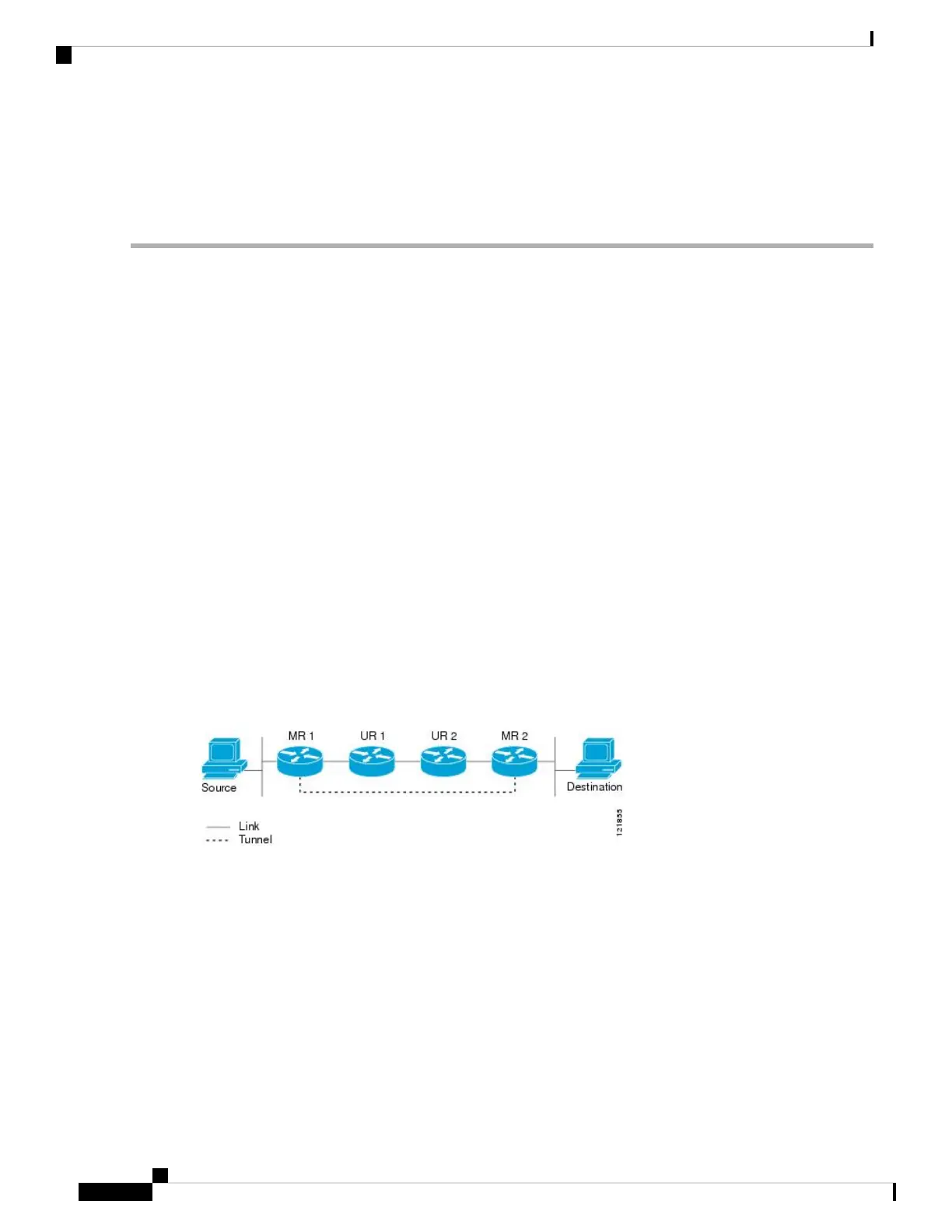RP/0/RP0/CPU0:router(config-static-vrf-afi)# 2001:0DB8::/32 2001:0DB8:3000::1 201
Configures an administrative distance of 201.
Step 6 commit
In the following example, a static route between PE and CE routers is configured, and a VRF is
associated with the static route:
configure
router static
vrf vrf_A
address-family ipv4 unicast
0.0.0.0/0 2.6.0.2 120
end
IPv4 Multicast Static Routes
IP multicast static routes (mroutes) allow you to have multicast paths diverge from the unicast paths. When
using Protocol Independent Multicast (PIM), the router expects to receive packets on the same interface where
it sends unicast packets back to the source. This expectation is beneficial if your multicast and unicast topologies
are congruent. However, you might want unicast packets to take one path and multicast packets to take another.
The most common reason for using separate unicast and multicast paths is tunneling. When a path between
a source and a destination does not support multicast routing, configuring two routers with a GRE tunnel
between them is the solution. In the figure below, each unicast router (UR) supports unicast packets only;
each multicast router (MR) supports multicast packets.
Figure 5: Tunnel for Multicast Packets
In the figure, the source delivers multicast packets to destination by using MR 1 and MR 2. MR 2 accepts the
multicast packet only if it predicts it can reach source over the tunnel. If this situation is true, when the
destination sends unicast packets to the source, MR 2 sends them over the tunnel. The check that MR2 can
reach the source over the tunnel is a Reverse Path Forwarding (RPF) check, and the static mroute allows the
check to be successful when the interface, on which the multicast packet arrives, is not the unicast path back
to the source. Sending the packet over the tunnel could be slower than natively sending it through UR 2, UR
1, and MR 1.
A multicast static route allows you to use the configuration in the above figure by configuring a static multicast
source. The system uses the configuration information instead of the unicast routing table to route the traffic.
Therefore, multicast packets can use the tunnel without having the unicast packets use the tunnel. Static
mroutes are local to the router they are configured on and not advertised or redistributed in any way to any
other router.
Routing Configuration Guide for Cisco NCS 5500 Series Routers, IOS XR Release 6.3.x
196
Implementing Static Routes
IPv4 Multicast Static Routes

